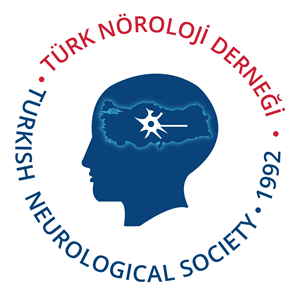Analysis of Peripapillary Retinal Nerve Fiber Layer and Macular Volume in Patients with Multiple Sclerosis, Neuromyelitis Optica Spectrum Disorders, and Healthy Controls Using Spectral Domain Optical Coherence Tomography in a Turkish Cohort
Ayşe İlksen Çolpak1 , Duygu Gülmez Sevim2
, Duygu Gülmez Sevim2 , Aslı Tuncer1
, Aslı Tuncer1 , Sevda Diker1
, Sevda Diker1 , Rana Karabudak1
, Rana Karabudak1 , Sibel Kadayıfçılar2
, Sibel Kadayıfçılar2 , Tülay Kansu1
, Tülay Kansu1
1Hacettepe University Faculty of Medicine, Department of Neurology, Ankara, Turkey
2Hacettepe University Faculty of Medicine, Department of Ophthalmology, Ankara, Turkey
Keywords: Neuromyelitis optica, optical coherence tomography, multiple sclerosis, optic neuritis
Abstract
Objective: To compare the peripapillary retinal nerve fiber layer (pRNFL) thickness and macular volume in patients with multiple sclerosis (MS), neuromyelitis optica spectrum disorders (NMOSD), and healthy controls.
Materials and Methods: This study used spectral domain-optical coherence tomography to measure pRNFL and the volume of retinal layers at the macula. Forty patients with MS or NMOSD and 19 healthy controls were enrolled.
Results: After at least one clinical episode of optic neuritis, the average pRNFL for NMOSD [60 µm (34-105)] and patients with MS [85 µm (41-109)] were lower than in healthy controls [99 µm (88-109)], and patients with NMOSD had significantly lower pRNFL compared with patients with MS (p=0.002). Foveal volume did not differ between optic neuritis eyes of patients with NMOSD and MS (NMOSD 1.18±0.3 mm3, MS 1.82±2.07 mm3). The mean pRNFL values in seronegative NMOSD eyes [58 µm (range, 47-111)] tended to be thinner compared with seropositive NMOSD eyes [76 µm (range, 42-105)]. This finding was not considered to be statistically significant.
Conclusion: Our study revealed that both foveal (area in a 1.5 mm ETDRS ring) and total macular volume (area in a 6 mm ETDRS ring) were lower in both patients with MS and NMOSD compared with healthy controls. Optic neuritis of NMOSD is associated with a thinner average RNFL compared with MS, suggesting earlier axonal injury in the affected optic nerves.


